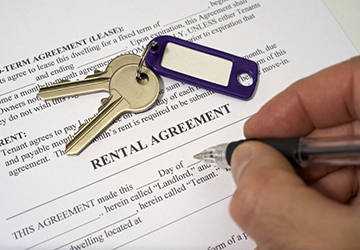Ever find yourself overwhelmed at the end of the month when bills come knocking? Every year, millions struggle to manage their monthly bills. If you're on the hunt for strategies to ease this financial burden, you’re in the right place.
The rising cost of living impacts many, but what if we told you there’s a way to negotiate those bills down? We understand the weight of these challenges, and we’re here to help.
Dive into this guide to discover “7 Tips for Negotiating Lower Monthly Bills” – because you deserve financial peace of mind.
Mastering the Art of Bill Negotiation
Every dollar saved on bills is a dollar earned. Understanding and implementing these negotiation tactics could make a sizable difference in your monthly budget. Ready? Let’s jump right in.
1. Do Your Research First
Knowledge is power. Before approaching your service providers, make sure you’re equipped with current market rates. Understanding the average costs can give you an edge in the negotiation process.
Not only does this ensure you aren’t overpaying, but it also provides leverage when negotiating. You could potentially save hundreds annually by aligning with market rates.
Compare rates using online platforms, forums, or even by asking friends and family. Make sure you’re comparing apples to apples. Look for similar service bundles or packages.
Being informed makes you a formidable negotiator. Don't underestimate the power of preparation.
Key Aspects: Duration of contracts, any hidden fees, and customer reviews

2. Build a Long-Term Relationship
Loyalty can be rewarding. Providers often have special offers or discounts for long-standing customers.
Loyalty rewards can translate into discounted rates or even additional services. Over time, these savings can significantly reduce your annual expenses.
Regularly communicate with your providers, express satisfaction, and inquire about loyalty rewards. Ensure that staying loyal doesn’t mean compromising on service quality.
A win-win scenario where both parties benefit is the aim. Loyalty, when rewarded, becomes a powerful tool in bill reduction.
Key Aspects: Service history, prompt payment records, and feedback provision.
3. Bundle Your Services
Some providers offer multiple services. By bundling these, you might get a
consolidated reduced rate.
Savings can sometimes be as high as 20% off individual services. Review all your services and see if one provider can cater to multiple needs.
Ensure you’re not sacrificing quality for the sake of a bundled discount. Consolidation can be a strategic way to cut costs without compromising on service quality.
Key Aspects: Duration of bundle contracts, combined service reliability, and overall cost-effectiveness.

4. Opt for Automatic Payments
Many providers offer discounts if you switch to automated payments. It's a convenient method, and it also ensures you never miss a payment deadline.
It will give you the benefits of Discounted rates and the convenience of hands-free payments. This can lead to yearly savings and also helps in maintaining a good credit score.
Talk to your providers about auto-payment options and potential associated discounts. Ensure you always have sufficient funds in your account to avoid overdraft fees.
Embracing technology not only simplifies life but can also be kinder to your wallet.
Key Aspects: Payment timelines, any associated fees, and ensuring a consistent account balance.
5. Negotiate at Contract Renewal Time
End-of-contract periods are ideal times to renegotiate terms, as providers are eager to retain customers.
You will get the chance to get lower rates. This can translate to consistent monthly savings for the duration of your renewed contract. Mark contract endings on your calendar and start negotiations a month in advance.
Be ready to walk away if terms aren't favorable; sometimes, this tactic alone can prompt a better offer.
A proactive approach during renewals can lead to substantial long-term savings.
Key Aspects: Existing customer reviews, current market rates, and competitors' offers.
6. Consider Downgrading Services
Evaluate your actual needs. Are you truly using all the services you’re paying for? If not, consider downgrading.
Paying only for what you use can drastically cut costs. Over a year, you might find that premium packages aren't always necessary.
Audit your usage monthly and discuss downgrading options with your provider. Make sure downgrading doesn't omit crucial services you rely on.
Sometimes, less truly is more. Aim for value over volume.
Key Aspects: Comparing basic versus premium packages, reviewing usage stats, and understanding service tiers.
7. Threaten to Switch Providers (But Be Ready to Actually Do It)
Sometimes, indicating that you're considering other options can lead providers to offer better deals. Providers might provide exclusive offers to retain you.
Leveraging competitive offers can lead to significant monthly savings. Research competitors' offers, and approach your current provider with this information.
Don’t bluff. If you threaten to leave, be prepared to follow through if they don't match or better the offer.
In the competitive market landscape, your loyalty as a customer has a high price – use it to your advantage.
Key Aspects: Current market rates, competitors' reviews, and contract termination clauses.
Conclusion
By now, you've armed yourself with some powerful strategies to start chipping away at those monthly bills.
But remember the key to success lies in consistent action. Review your bills regularly, stay updated with the latest offers, and be ready to negotiate.
With determination and the insights from this guide, you're well on your way to enjoying more savings.
Ready to start? Take action today and watch those monthly bills shrink!









